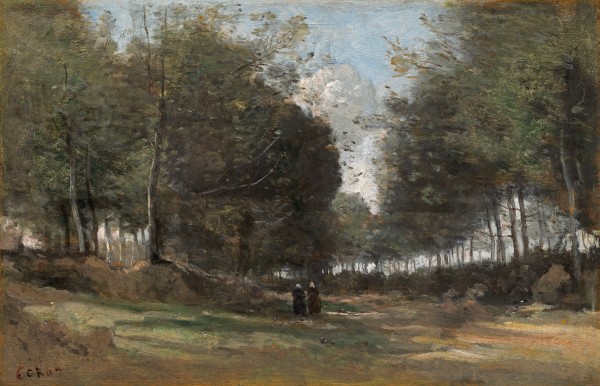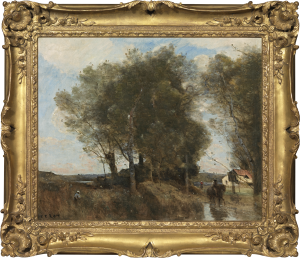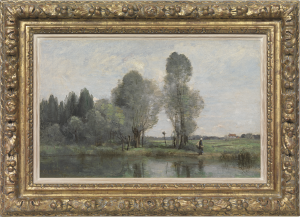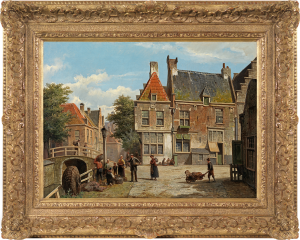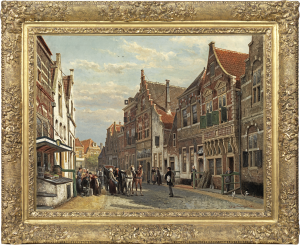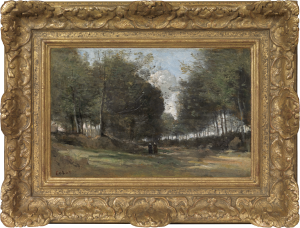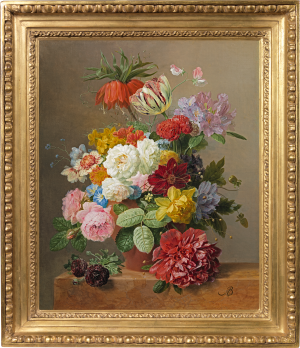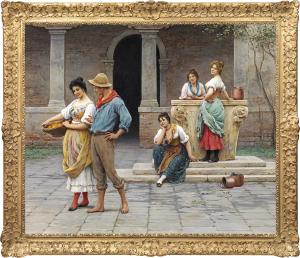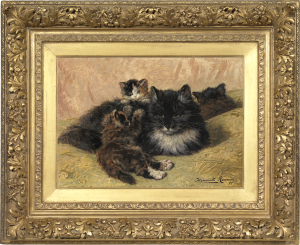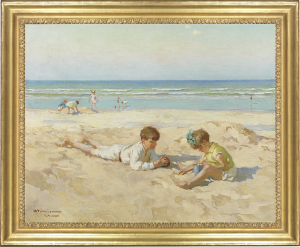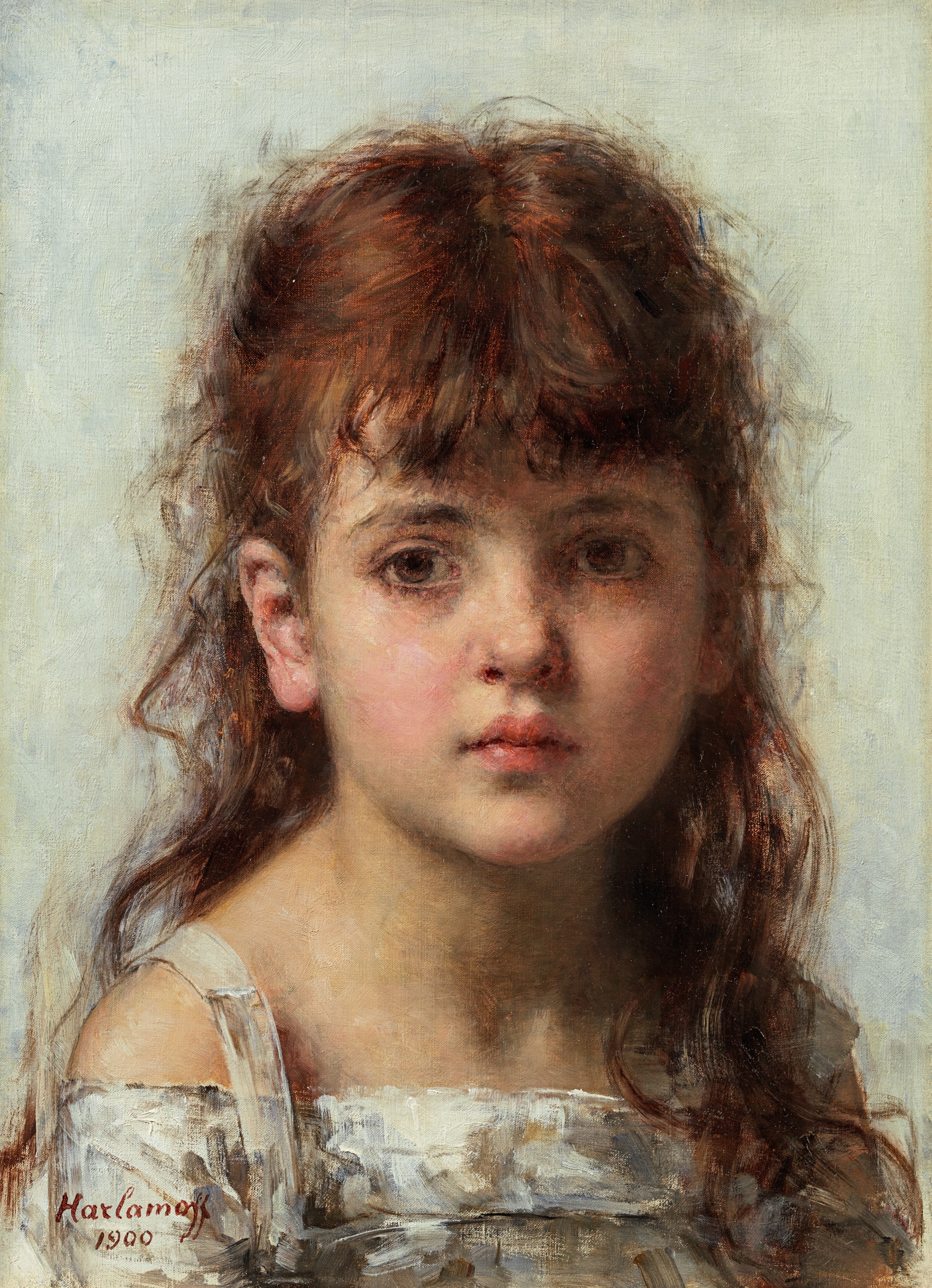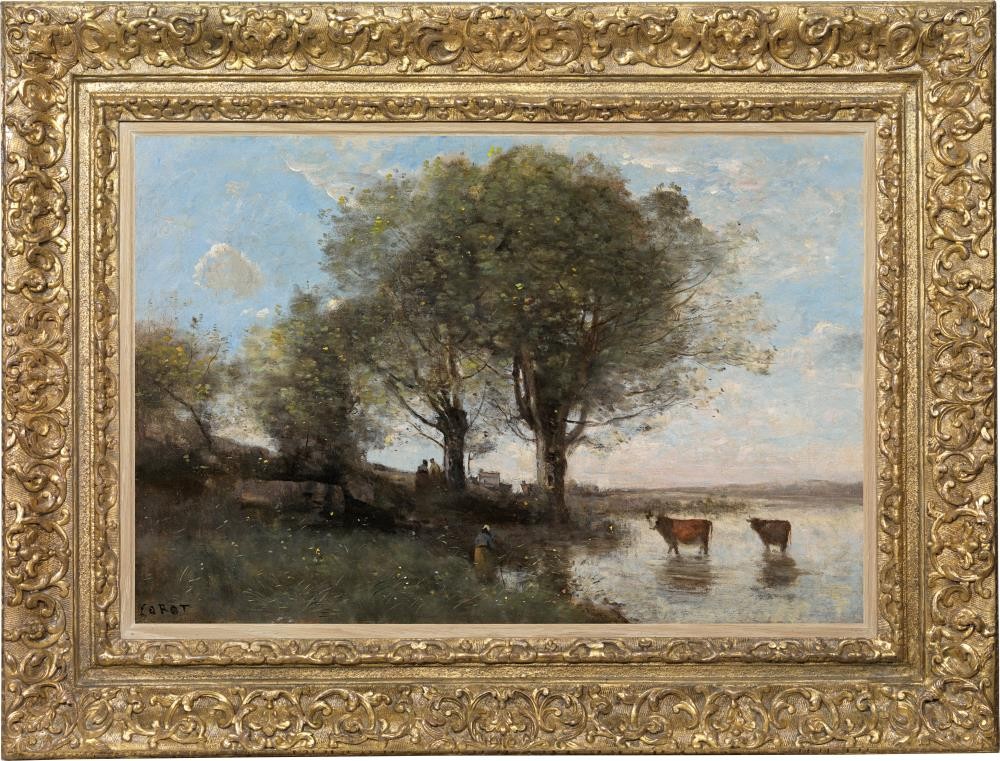Jean-Baptiste-Camille Corot
Le rappel des vaches
Oil on canvas: 19.8 x 29.3 (in) / 50.2 x 74.3 (cm)
Signed lower left: Corot
This artwork is for sale.
Please contact us on: +44 (0)20 7493 3939.
Email us
JEAN-BAPTISTE-CAMILLE COROT
Paris 1796 - 1875 Ville d’Avray
Ref: CA 119
Le rappel des vaches
Signed lower left: Corot
Oil on canvas: 19 ¾ x 29 ¼ in / 50.2 x 74.3 cm
Frame size: 29 ½ x 39 in / 74.9 x 99.1 cm
Painted circa 1870
Provenance:
Boussod, Valadon et Cie, Paris, by 1886 (inv. no. 18016);
from whom acquired on 3rd December 1889 by John Parkinson, Boston, MA
Newhouse Galleries, New York
Mrs Adolph D Williams, Richmond, VA;
by whom bequeathed in 1949 to the Virginia Museum of Fine Arts, Richmond (acc. no. 19.11.6)
Exhibited:
New York, Wildenstein and Company, Inc., Corot, 30th October-6th December 1969, no.72, illus. (loaned by the Virginia Museum of Fine Arts for the benefit of the Citizens’ Committee for Children of New York)
Literature:
Alfred Robaut, L’Oeuvre de Corot, Paris 1905, vol. III, p.210, no.1877, illus.
Claire Lebeau-Dieterle has confirmed that this is an autograph work by Jean-Baptiste-Camille Corot
‘Beauty in art consists of a truthfulness in the impression we have received from an aspect of nature...the real is one part of art; the sentiment completes it’, Corot declared in 1856. This painting is a classic example of Corot’s mature work: a silvery evocation of timeless rural life. As the light of a summer afternoon declines gently towards sunset, village women call the cows home for milking. Sunlight filters through the two magnificent trees at the centre of the work, flicks and dabs of gold paint depicting the rustling leaves catching the rays. By balancing areas of sunlight and shadow, Corot creates a dreamy mood of benevolent calm. The trees which fill the left hand side of the painting are silhouetted against intense blue. The pond, filled with the radiant reflection of the sky, is pierced by the dark forms of the two cows cooling in the shallows. Corot creates atmosphere through smudged and softened brushwork, with a scatter of dots of intense colour which give animation to all parts of the composition.
Corot observed nature closely before creating idealized landscapes that he called souvenirs, nostalgic distillations of his visual experience. As a young man in the 1820s he had made his first visit to Italy. He was influenced by the landscapes of the Rome-based Frenchman Claude Lorrain (1600-1682), who found in the countryside of the Roman Campagna a timeless, Arcadian world. Paintings such as Le rappel des vaches are modern explorations of Claude’s Arcadia, echoing the seventeenth century artist’s soft, harmonious palette of gentle blues and greens. As George Bazin comments, ‘Human toil is for Corot to be kept at arm’s length, and the nature that he paints is a kind of Golden Age, where man lives, without too much effort, from the fruits of the field or the milk of his livestock’. Corot’s rich, allusive handling of paint had profound effects on the younger artists – the future Impressionist generation - to whom he gave advice, including Camille Pissarro and Claude Monet.
JEAN-BAPTISTE-CAMILLE COROT
Paris 1796 - 1875 Ville d’Avray
Born into a Parisian merchant’s family, Jean-Baptiste-Camille Corot renounced his commercial heritage in order to pursue his vocation as a painter. Despite his family’s opposition, he received an allowance from his father that enabled him to study first with Michallon, and then with Bertin, both neo-classical landscape painters.
In 1825 Corot made his first visit to Italy. During the three years he spent there he painted many of his most spontaneous plein air masterpieces, remarkable for their fidelity to nature, a classical concern with form and the precise observation of tonal values. In 1834 and 1843, he made two more visits to Italy, painting in Rome, Florence and Venice.
Corot also painted more academic and finished works which he considered more suitable for the Paris Salon, where he exhibited from 1827. He received a second-class medal at the Salon in 1833 and was awarded the Légion d’Honneur in 1846. During the 1830s, Corot was influenced by Dutch seventeenth century artists, especially Jacob van Ruisdael. Apart from this Dutch phase, however, his paintings tended to convey a more idealised concept of nature, expressed in a Claudian vein, which often included literary, allegorical or mythological subjects.
Corot travelled extensively throughout France, painting along the Channel coast and in Fontainebleau. His most cherished spot was at Ville d’Avray near Versailles, where his parents had purchased a villa amidst a landscape that was of particular aesthetic appeal. He visited Holland in 1854 and England in 1862.
Corot’s increasingly idealised concept of landscape resulted in the all-pervasive lyricism that characterised his late work. He entitled these paintings souvenirs, which were essentially nostalgic distillations of his visual experience, admired for their delicate, dreamlike quality. In 1856 Corot wrote: ‘Beauty in art consists of a truthfulness in the impression we have received from an aspect of nature... the real is one part of art; the sentiment completes it’. It was the diaphanous, twilight effects of his paintings that epitomized such sentiment and greatly appealed to the prevalent neo-Rococo taste.
From the late 1840s, Corot became acquainted with the Barbizon painters, particularly Daubigny, Millet and Rousseau, with whom he painted and studied the new art of photography. His interest in naturalism and an unerring fidelity to his own personal vision earned him the esteem of many younger artists, including Harpignies, Lépine and Pissarro; it was they who named him with reverence Père Corot.

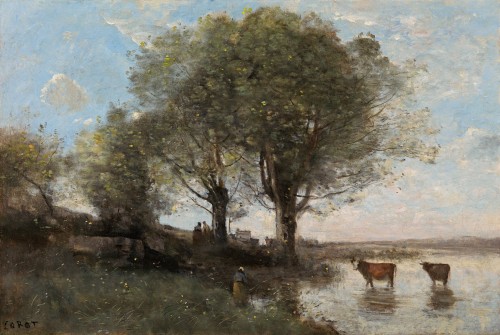
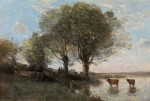
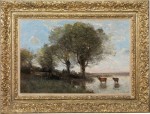

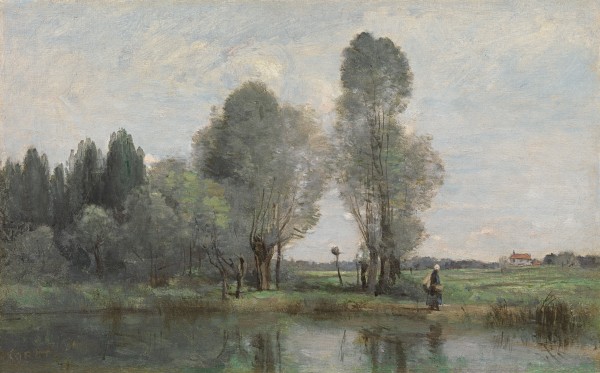
![Jean-Baptiste-Camille Corot - Passiance [Landes] Jean-Baptiste-Camille Corot - Passiance [Landes]](/images_products/M_478_bc1b82858b896871d7fde32923b8bdf8.jpg)
